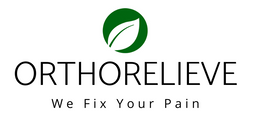What is osteopenia?
Osteopenia is a loss of bone mineral density (BMD) that weakens bones. This happens more commonly to people older than 50, especially women, but it can also happen to men as well. A recent study has shown that of the estimated 10 million Americans with osteoporosis, about 80% (or 8 million) are women. The bone loss in osteopenia however, is not as severe as it is in osteoporosis, although osteopenia can lead to osteoporosis, and is often seen as a precursor to osteoporosis.
Osteopenia causes
There are several causes to osteopenia, but the most common cause is aging. After the bone mass peaks in an adult in his or her 30s, the body gradually breaks down old bone faster than it builds new bone. That means you lose some bone density. Women lose bone more quickly after menopause, due to reduced estrogen levels. Other causes include poor nutrition, an unhealthy lifestyle and hormonal changes can also lead to osteopenia.
Osteopenia symptoms
Unfortunately, osteopenia has no signs and symptoms until it progresses to osteoporosis, but a painless screening test with your healthcare provider can measure bone strength and density.
Osteopenia treatment
There is no cure for osteopenia, but preventive measures such as regular bone density monitoring administered by your healthcare provider may help keep it in check. Regular exercise and a healthy diet also helps to manage the condition.
Is osteopenia reversible?
Sadly there is no cure for osteopenia. However, simple lifestyle changes such as regular exercise and a healthy diet should be sufficient to increase bone strength and prevent loss of bone density. These include:
- Regular exercise such walking and swimming
- Strength building, weight training exercises
- A balanced diet rich in fruits and vegetables
- Avoid smoking, alcohol, drugs
- Increase vitamin D intake through exposure to the sun
Living with osteopenia
People with low bone density may be prone to falls, leading to fractures. As such it is important to ensure that your home is properly equipped to prevent falls. These preventive measures may include:
- Installing railings and handlebars on stairs and bathrooms.
- Use anti-skid rugs on floors
- Remove tripping hazards
- Ensure ample lighting in the house
- Keeping the house clutter free
What foods to avoid with osteopenia?
Stay away from processed foods, junk food and food with additional salt and sodium like crackers and chips. A diet rich in calcium and vitamin D is essential to ensure strong bones in osteopenia patients. Calcium rich foods include dairy products, milk, dark green leafy vegetables, baked beans and soy beans. Foods rich in vitamin D include salmon, tuna, sardines and cod liver oil.
Get fast relief of back pain with OrthoRelieve's back braces:



